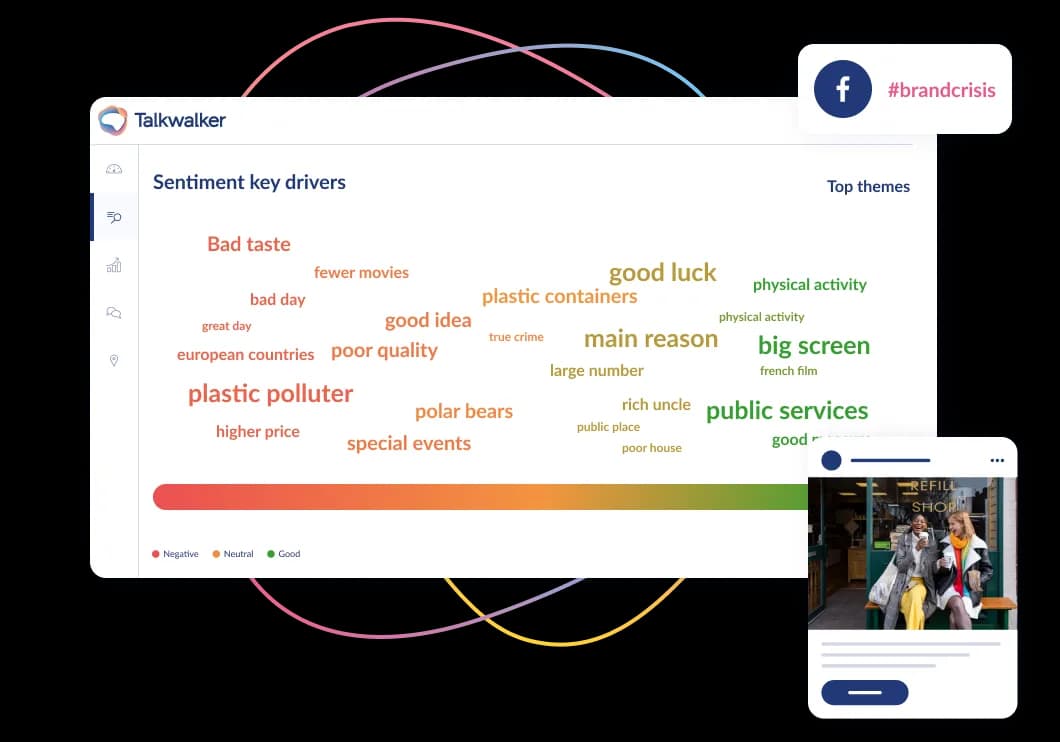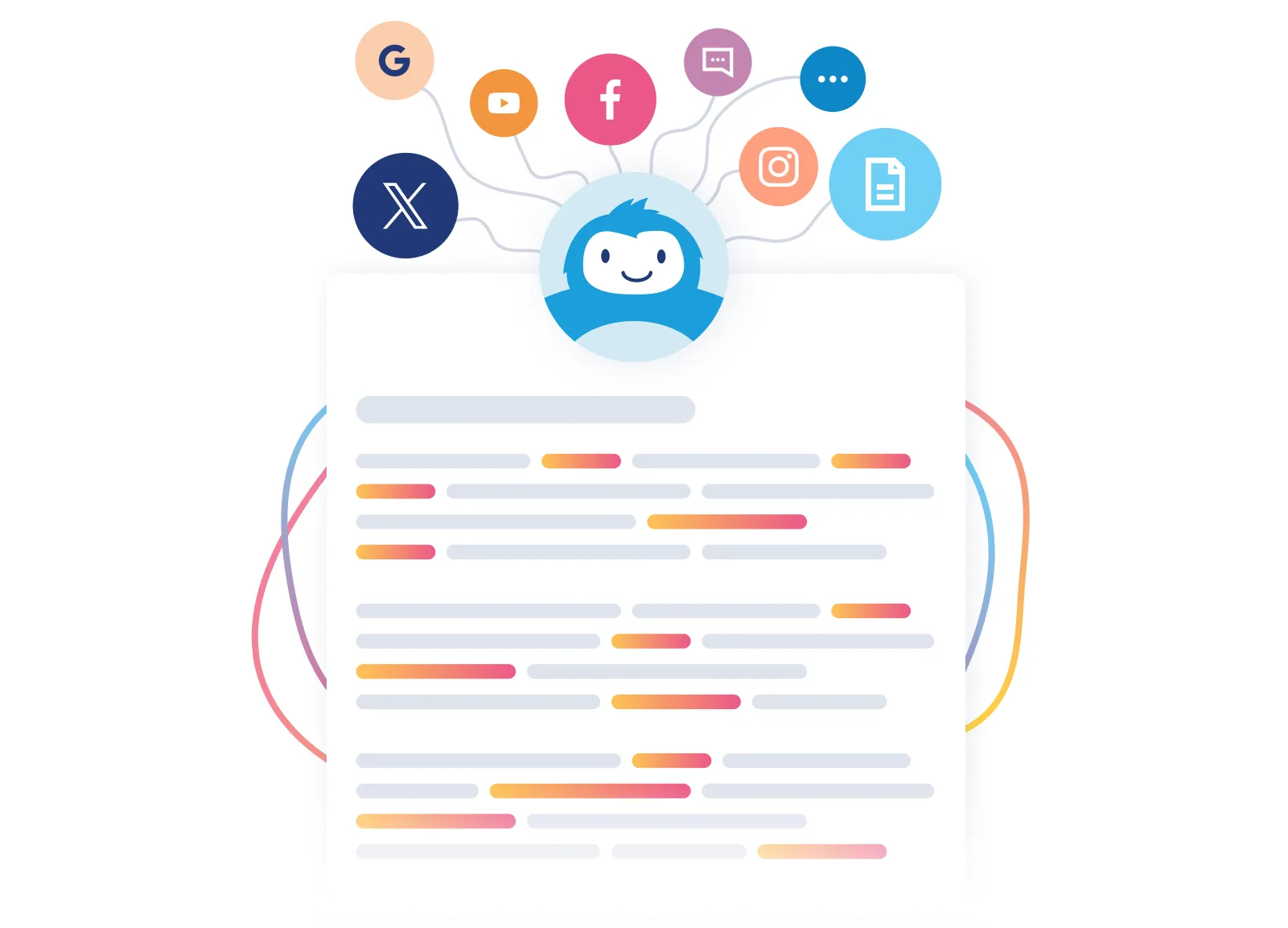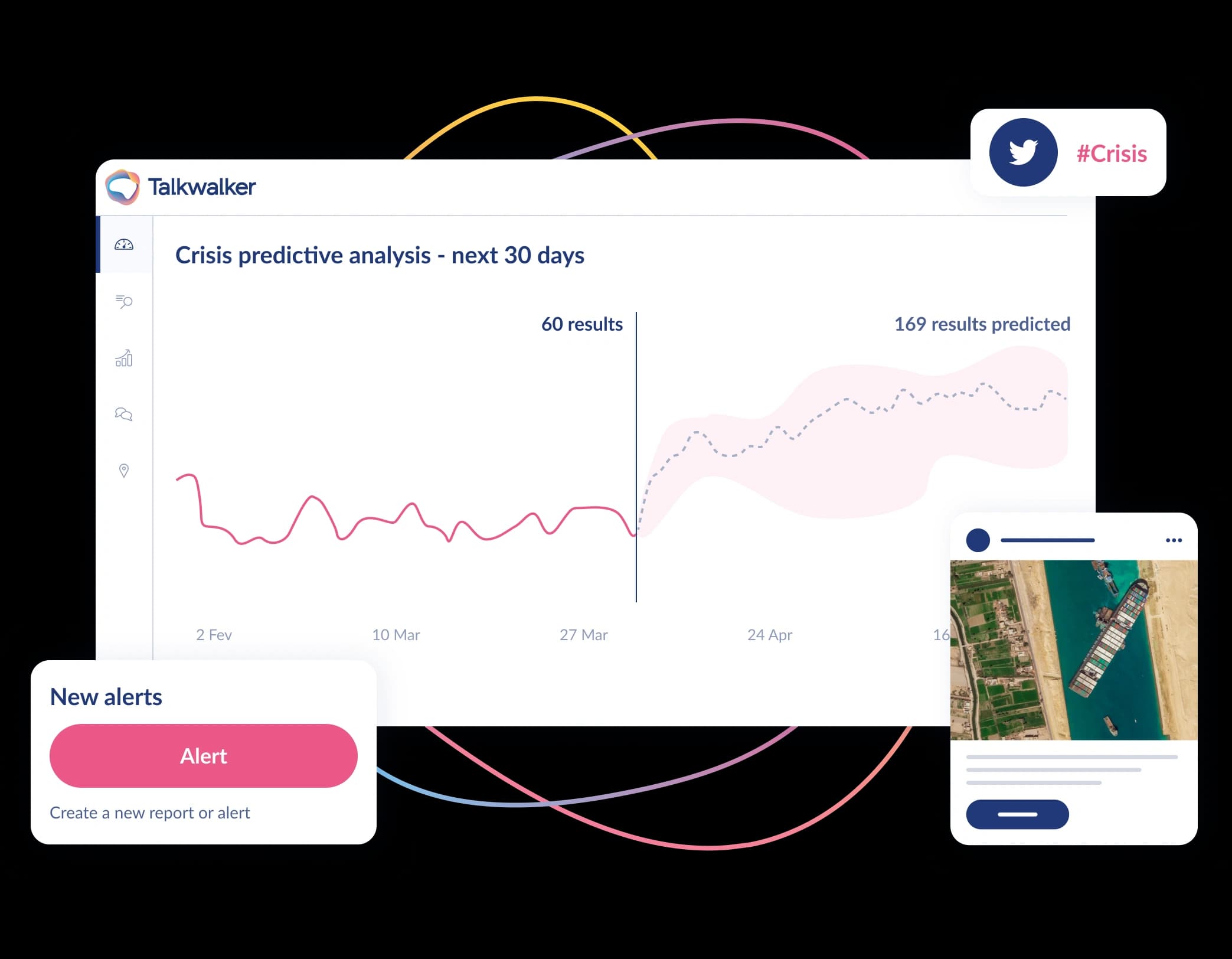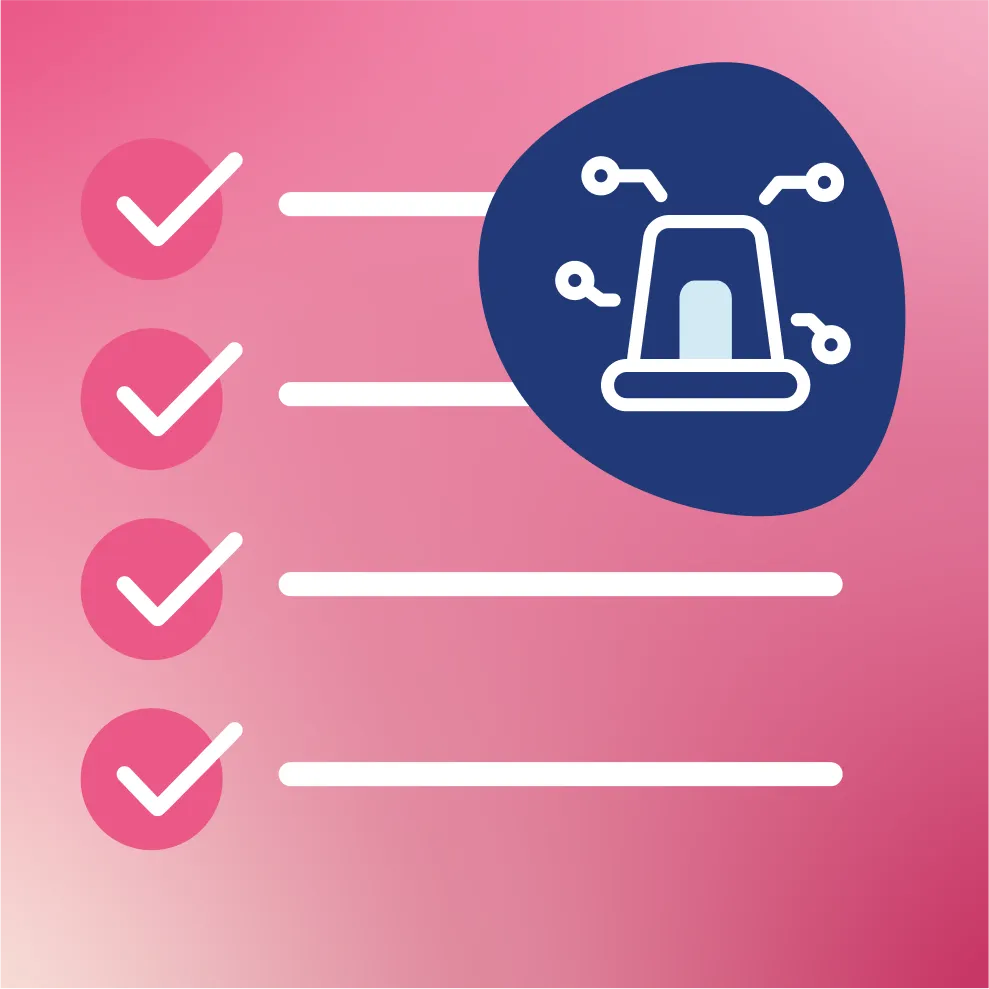
Crisis Management
Monitor. Respond. Report. Prevent
Most businesses experience crises. And most crises are identified, managed, and addressed online. So do you have the right tools, people and plan in place?

Powerful Crisis Management Technology
Understand what consumers, customers, and competitors are saying about your business online.
Pre-identify issues that could flare, monitor crises as they unfold, and monitor progress as you implement tactics to extinguish the fires.

Complete Coverage
Get complete coverage without any data throttling. Plus top-notch data accuracy means you can be confident you never miss a mention!

Real Time Alerts
Alerts straight to your phone and email, through 24/7 monitoring. Stay informed informed so you can act quickly and proactively to respond to potential issues.

Next-Generation Social Listening
Go beyond boolean searching and dashboard analysis. Make social data available to all your teams.

Build a Strong Crisis Management Plan.
A well-defined crisis management plan is crucial for addressing issues that can potentially harm your business's reputation, operations, or employees. By effectively monitoring your brand online, you can minimize the impact of a crisis and expedite recovery.
Useful Reading...

Real time crisis management
Read our brochure on how to manage crisis communications in the digital age.

11 steps for PR crisis management
Take a look at our insightful blog post that delves into the intricacies of identifying and managing crises.

7 Step Crisis Communication Plan
Read our blog with 7 steps on how to build an effective crisis communications plan.
Common Questions About Crisis Management
Crisis management refers to the process of anticipating, preparing for, and responding to a crisis situation. A crisis can be any unexpected event that threatens an organization's reputation, brand image, finances, or operations. Examples of crises include data breaches, product recalls, natural disasters, social media backlash, employee misconduct, and more.
Effective crisis management involves several stages, including crisis prevention, crisis preparation, and crisis response. In the prevention stage, organizations take steps to minimize the risk of a crisis occurring in the first place. This can include developing robust policies and procedures, conducting rigorous risk assessments, and investing in employee training.
In the preparation stage, organizations develop a crisis management plan that outlines the roles and responsibilities of each team member, the steps to take during a crisis, and the communication channels to use. The plan should also specify the criteria for activating the crisis management team, based on the severity of the situation.
During a crisis, the crisis management team takes action to mitigate the impact and restore normal operations. This involves communicating with stakeholders, including employees, customers, media outlets, and the public, to provide accurate and timely information. It is also important to take responsibility for the situation, show empathy, and offer solutions to the affected parties.
In addition to these core stages, crisis management also requires ongoing analysis and evaluation to improve the process continually. This includes post-crisis debriefs and reviews, where teams identify strengths, weaknesses, and areas for improvement. Organizations can also use social listening and media monitoring tools to stay up-to-date on customer sentiment and emerging trends that could impact their operations.
During a crisis, you need to know what is being said about your brand and where it's being said. Talkwalker monitors social media platforms and other sources to show you exactly what people are saying about your brand. It tracks all mentions, including hashtags, to give you a comprehensive overview of conversations about your brand. With this information, you can identify issues, rumors, and complaints in real-time, which is crucial when dealing with a crisis.
Track influencers
An influencer can either amplify the positivity or negativity of your brand in a crisis. They have the power to sway opinions and shape the conversation. Talkwalker identifies influencers by analyzing their content and engagement. You can then reach out to them and get them to participate in the conversation positively. This strategy can help you change the conversation and turn a crisis into an opportunity.
Monitor conversations
Once you've implemented your crisis management strategy, it's crucial to track its effectiveness. Talkwalker provides you with real-time analytics that show you the impact of your response. You can track the reach and engagement of your messaging, monitor the sentiment, and identify which posts are generating the most interest. These insights will allow you to tweak your strategy continually and improve it for the future.
Benchmark against competitors
Talkwalker also allows you to benchmark your brand against your competitors. You can compare engagement, share of voice, and sentiment across social media platforms. This allows you to monitor your competitors for any potential crises. It also gives you the advantage of identifying industry trends and gaps in the market that you can leverage.
When does a problem become a crisis for PR professionals? Let's face it, not every issue rises to the level of a full-blown PR disaster.
Before hitting the panic button, let's ask ourselves a few key questions:
Will this problem significantly disrupt our company's operations or send the board into a frenzy?
Will it have a detrimental impact on our bottom line?
Will our brand's reputation be at risk, affecting stakeholders, customers, prospects, and the industry as a whole?
Sure, individually, any of these scenarios might not be ideal, but we could handle them. Even if a couple of them occurred simultaneously, we could manage. But what if all three collide? PR CRISIS!
But, before we jump into crisis mode, let's take a step back. Overreacting may only exacerbate the issue at hand.
Because the truth is, not every problem should be labeled as a crisis. A negative review or a sarcastic post on social media, while annoying, doesn't automatically classify as a crisis.
However, these seemingly minor issues, if not handled with care, can quickly escalate into a full-blown PR crisis, causing reputational damage that takes time to repair. This is where social media listening becomes a powerful tool in recognizing potential crises before they spiral out of control.
So, which PR crises demand our immediate attention? Let's break them down into three levels:
PR crisis level 1:
This is the type of crisis that could leave your brand severely wounded if not addressed swiftly. Think product recalls due to defects or safety concerns, workplace harassment incidents involving intimidation or discrimination, or instances of corporate impropriety ranging from deception to poor customer service. Be prepared to face negative media coverage across various channels – press, social media, news outlets, television, and radio. A multidimensional response strategy is crucial, involving public apologies, explanations on your website, and active engagement on social media, press, and broadcast platforms.
PR crisis level 2:
Though less intense, level 2 crises should not be taken lightly. Customer complaints and criticisms can snowball into major crises if left unattended. Make sure to act promptly, addressing these issues one-on-one or publicly, depending on where they arise. Social listening will be your ally in identifying these problems early and responding swiftly.
PR crisis level 3:
Sometimes, a crisis within a competitor's or related industry's sphere can cast a shadow on your brand by association. That's when competitive intelligence becomes key. Besides monitoring your own social media channels – which we hope you're already doing – keep an eye on your competitors' channels as well. If you catch wind of a potential issue, make a statement promptly. By staying proactive, you minimize the chances of reputational damage.
As PR professionals, your role in crisis management is vital. By identifying and categorizing potential crises, you can effectively prevent minor problems from erupting into full-scale disasters. So, embrace the power of social listening and competitive intelligence to safeguard your brand's reputation and ensure smooth sailing even in tumultuous times.
